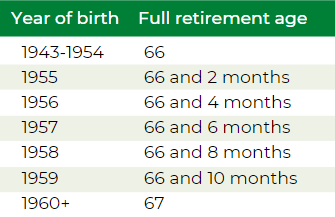Retirement Guide for ExxonMobil Employees
2025 Tax Rates, Health Care Updates, Interest Rates, Pension Plan, and more
In this comprehensive retirement guide for ExxonMobil employees in the United States, we explore the many factors you must account for when deciding on the proper time to retire from ExxonMobil. These factors include healthcare & benefit changes, interest rates, 2025 tax rates, inflation, and much more.
Note that The Retirement Group is not affiliated with ExxonMobil. We recommend reaching out to the ExxonMobil benefits department for further information, especially if you are at or nearing your 50s or 60s.

Table of Contents
Section 1: ExxonMobil 2025 Updates
Section 1.1: Pension Plan Updates
Section 1.2: Transition to Alight Solutions
Section 1.3: Health Benefits
Section 1.4: Security Benefits
Section 1.5: Financial Benefits
Section 1.6: Support Benefits
Section 1.7: Financial Performance Updates
Section 1.8: Action Steps for Retirees
Section 2: 2025 Tax Changes & Inflation Implications
Section 2.1: Tax Code Updates
Section 2.2: Optimizing Retirement Contributions
Section 2.3: Accounting for Inflation
Section 3: Planning for your Retirement from ExxonMobil
Section 3.1: Investing in the AT&T 401(k) Program
Section 3.2: 401(k) Investing Benchmarks by Decade
Section 4: The ExxonMobil Pension Plan, Explained
Section 4.1: The PIP Plan
Section 4.2: XTO Employee Information
Section 4.3: ExxonMobil Pension Explained
Section 5: The ExxonMobil 401(k) Plan
Section 5.1: The ExxonMobil Savings Plan
Section 5.2: Leverage your 401(k) before you retire
Section 5.3: Net Unrealized Appreciation Strategy
Section 6: Health Care and Retirement Benefits at ExxonMobil
Section 6.1: Using an HSA for retirement health care
Section 6.2: HSA Contribution Limits & Retirement Strategy
Section 6.3: ExxonMobil Life Insurance in retirement
Section 7: Social Security & Medicare Strategies
Section 7.1: Your Social Security Strategy
Section 7.2: ExxonMobil Medicare Coverage for Retirees
Section 7.3: The Reality of Medical Costs in Retirement
Section 8: Dealing with Divorce
Section 8.1: Divorce and Retirement Benefits
Section 8.2: Divorce and ExxonMobil Pension Benefits
Section 8.3: In the process of divorcing?
Section 9: Survivor Checklist for ExxonMobil Employees
Section 9.1: Immediate actions for your survivor
Section 9.2: If you have a joint pension
Section 9.3: If your survivor has ExxonMobil medical coverage
Section 10: Life After Your Career at ExxonMobil
Section 101: Financial benefits of working in retirement
Section 10.2: Emotional benefits of working in retirement
ExxonMobil 2025 Updates
For 2025, ExxonMobil has made significant updates to the benefits and support provided to employees and retirees in the United States. These changes encompass a range of adjustments aimed at improving financial stability, health, and overall well-being for the ExxonMobil community, particularly those in their 50s and 60s. Below is a comprehensive summary of the key updates and changes:
1. Pension Plan Updates
- Compensation Limit: The compensation limit for the pension benefit has been set at $275,000.
- Benefit Limit: The benefit limit places a restriction on the amount of monthly payment that retirees are entitled to receive in retirement.
- Segment Rates: Segment rates decreased slightly from Q1 to Q2 2024. This decrease slightly increased lump sum values for retirees with a benefit commencement date (BCD) in Q2.
- Lifetime Monthly Retirement Benefit: ExxonMobil continues to offer employees a lifetime monthly retirement benefit at no cost. To qualify, employees must have at least 15 years of service and leave the company on or after age 55.
- Non-Retiree Pension Options: Employees who separate from service before reaching retirement eligibility (typically age 55 with 15 years of service) have three options:
- Receive the full vested benefit as a single-life annuity at age 65.
- Receive a discounted benefit at an age less than 65.
- Receive a one-time lump sum offer.
- Vesting and Annuity Details: Employees become 100% vested in the pension benefit after five years of eligible service. The "pensionable pay" is calculated as the average of the highest 36 consecutive months out of the last 10 years, typically the last 36 months.
2. Transition to Alight Solutions
Starting January 2, 2024, ExxonMobil transitioned its benefits administration to Alight Solutions. This transition enhanced the accessibility and management of benefits for employees and retirees. Here are the details:
- Your Total Rewards Portal: The new portal, managed by Alight, will provide access to a variety of tools and resources, including pension and health plan management, direct deposit setup, tax withholding adjustments, and beneficiary designations.
- Pension and Health Plan Payments: Pension payments will be processed through Bank of America, with payment methods remaining the same. Health plan premium payments also transitioned to Alight, which required employees to update their payment methods.
- Security Measures: The portal uses advanced encryption methods to protect personal information, with automatic log-off features to ensure data security.
- Support and Assistance: The ExxonMobil Benefits Service Center, managed by Alight, offers support through phone and online chat, helping employees navigate the new system and address any concerns.

3. Health Benefits
ExxonMobil offers a robust and flexible health care benefit plan.
- Medical Plan: ExxonMobil’s medical plan includes comprehensive coverage for medical, prescription drug, and mental health benefits. Employees can choose between two Point of Service (POS) II options and network-only options. Preventive care is fully covered, with low or no deductibles.
- Dental and Vision Plans: The dental plan covers 100% of preventive services and a portion of other dental procedures, including orthodontics. The vision plan offers annual eye exams and allowances for lenses, frames, or contact lenses, along with discounts on laser eye surgery.
- Flexible Spending Accounts (FSAs): FSAs allow employees to set aside pre-tax dollars for eligible healthcare and dependent care expenses, lowering taxable income and providing financial relief for out-of-pocket costs.
- Employee Assistance Program (EAP): The EAP provides confidential professional counseling for personal and family issues, including mental health support, available at no additional cost.
4. Security Benefits
For many of us, retirement represents a time of opportunity, as well as uncertainty. Fortunately, ExxonMobil provides the following security benefits to assist their employees:
- Life Insurance: Basic life insurance and accidental death and dismemberment (AD&D) coverage are provided automatically at no cost. Employees can opt for additional coverage through Group Universal Life (GUL) and voluntary AD&D insurance.
- Disability Insurance: Both short-term and long-term disability insurance ensure income protection in case of illness or injury. Short-term disability offers up to six weeks of full pay, while long-term disability provides 50% of pay, supplemented by other available replacement income.
5. Financial Benefits
Designed to empower employees with the tools they need for long-term security, ExxonMobil's financial benefits help employees prepare for tomorrow while navigating today.
- Savings Plan: Employees can contribute between 6% and 20% of their pay to the Savings Plan, with ExxonMobil matching 7% if the employee contributes at least 6%. The plan offers various investment options, promoting financial growth and security.
- Pension Plan: Enrollment in the pension plan is automatic, providing a monthly annuity in retirement. Vesting occurs after five years of service, with early retirement options available.
- Financial Fitness Program: This program offers tools and resources for financial planning, helping employees manage their money effectively and prepare for a secure financial future.

6. Support Benefits
You're more than an employee — and ExxonMobil understands that. That's why they provide extensive support benefits to their team.
- Work-Life Balance: ExxonMobil supports work-life balance through various programs, including vacation days from the first day of employment, personal time for emergencies, and parental paid time off.
- Adoption Assistance and Back-Up Care: Financial assistance for adoption and back-up care programs for family members ensure employees have the support they need during significant life events.
7. Financial Performance and Strategic Updates
- First Quarter 2024 Financial Results: ExxonMobil reported $8.22 billion in net income for Q1 2024, a 28% decrease from Q1 2023, due to higher expenses and industry refining margins. Total revenues fell by 1.3% to $83.1 billion, with a profit margin of 9.9%.
- Operational Achievements: The company achieved quarterly gross production of more than 600,000 oil-equivalent barrels per day in Guyana and reduced operated methane emissions intensity by over 60% since 2016.
- Shareholder Returns: ExxonMobil announced free cash flow of $10.1 billion and shareholder distributions of $6.8 billion in Q1 2024, including $3.8 billion in dividends and $3.0 billion in share repurchases. The annual pace of share repurchases will increase to $20 billion per year.
8. Action Steps for Employees and Retirees
Retirement is all about proactive planning, to help your transition be as seamless as possible. While you're still working, here are some steps to take to set yourself up for success:
- Register on the Your Total Rewards Portal: Employees must register on the new portal to manage their benefits effectively.
- Update Payment Methods: Employees paying health plan premiums via check or automatic payments must update payment methods to ensure continuous coverage into retirement.
- Review Beneficiary Designations: You should review and update your beneficiary designations on the new portal to expedite the payment process in case of unforeseen events.
- Monitor Pension Payments: Pension payment statements will be available on the portal, allowing you to review and manage your payments and withholdings in retirement.
2025 Tax Changes & Inflation Implications

It is imperative for individuals in the United States, especially those in their 50s or 60s, to be aware of new changes made by the IRS. For employees of ExxonMobil, the most important factors for 2025 include the following:
- Standard deduction. In 2025, the standard deduction increased to $15,000 for single filers and married filing separately; $30,000 for joint filers, and $22,500 for heads of household.
- Additional deduction. Taxpayers who are over the age of 65 or blind can add an additional $1,600 to their standard deduction. This amount jumps to $2,000 if they are also unmarried or not a surviving spouse.
- Cash contributions to charity. The special deduction that allowed non-itemizers to deduct up to $300 in cash donations to charity — or $600 for those married filing jointly — has expired.

Child Tax Credit Updates for 2025
Many of our clients who are interested in reducing their tax burdens as much as possible are excited to learn about the Child Tax Credit. Although it only applies to individuals with children under the age of 18, it can be relevant to those who are approaching retirement if they have minor children — or if their children have children!
Here are the updates to keep track of for 2025:
- Maximum credit per qualifying child: $2,000 for children 5 and under; $3,000 for children 6 through 17.
- Child Tax Credit eligibility. As a parent or guardian, you are eligible for the Child Tax Credit if your adjusted gross income is less than $200,000, or $400,000 married filing jointly.
- Partial refundability. If your Child Tax Credit is greater than your tax, you can receive up to $1,600 as a cash refund.
Remote workers employed by ExxonMobil might face double taxation on state taxes. Here's what you need to know.
Thanks to the advent of remote work during and after the COVID-19 pandemic, many employees moved away from core cities. Notably, these movements could have taken them outside the state where they were employed. Some states established temporary relief provisions to avoid double taxation of income, but many of those provisions may have expired. There are only six states that currently have a "special convenience of employer" rule: Connecticut, Delaware, Nebraska, New Jersey, New York, and Pennsylvania. If you work remotely for ExxonMobil, and if you don't currently reside in those states, consult with your tax advisor to determine if there are other ways to mitigate the double taxation.
How ExxonMobil employees can optimize their retirement contributions
Contributing to your company's 401(k) plan can cut this year's tax bill significantly. With the right planning, these benefits can be compounded over time. In 2024, the amount you can save increased:
- 2024 limit. Individuals can contribute $23,000 to their 401(k) plans in 2024.
- Catch-up contributions. Employees age 50 and over can contribute an extra $7,500, bringing their total limit to $30,500.
- A major opportunity. Lowering your taxable income by up to $30,500 means less of your money is immediately taxed. As displayed by the table below, this could save you thousands on your tax bill.
Many investors choose to invest the money that they save in taxes this year. This bonus nest egg then has the opportunity to grow in the market, which can help pay the deferred tax when they make withdrawals from their accounts later in life.
2024 Tax Brackets

Accounting for inflation in your retirement plan

Following the searing rates of inflation Americans experienced in the early 2020s, the balmy rate of 2.4% for the 12-month period ending in September 2024 seems much more palatable (Source: Bureau of Labor Statistics). Still, inflation is still considered a volatile source of risk to your portfolio, especially for investors in their 50s or 60s. Whether you like it or not, inflation will reduce the purchasing power of your dollars over time.
The Federal Reserve strives to achieve a 2% inflation rate each year, but the 8.3% inflation rate of 2022 reminded all of us that this target is anything but a guarantee. In order to maintain the same standard of living throughout your retirement after leaving ExxonMobil, you will have to factor rising costs into your plan. This is doubly important for important sectors like health care and housing, which have been known to outpace the total inflation rate, sometimes by significant amounts.
An experienced advisor can help you prepare your portfolio for inflation, while taking into account the rest of your comprehensive plan. Speak with a financial advisor today to start planning for the impacts.
*Source: IRS.gov, Yahoo, Bankrate, Forbes

Planning for your Retirement from ExxonMobil
Retirement planning is a verb, a consistent action that must be taken whether you’re 30 or 60.
The truth is that most Americans don’t know how much to save or the amount of income they’ll need.
No matter where you stand in the planning process, or your current age, we designed this guide to provide you with a comprehensive overview of the steps to take toward retirement. With the right resources, you can simplify and streamline your transition from ExxonMobil into retirement — and get the most of your benefits.
You know you need to be saving and investing, because "time in the market" beats "timing the market". But even if you've been investing for years, the game changes entirely once you switch from saving to spending.
That's where The Retirement Group comes in. We've partnered with Wealth Enhancement to offer a wide range of retirement planning resources. With a qualified, competent, and caring advising team by your side, ExxonMobil employees in the United States can make the most of what they've saved, and better plan for what they still need.
Don't leave your retirement transition to chance. Whether you're focused on maximizing the potential of your benefits, planning for rising health care costs, or creating effective tax diversification in your portfolio, The Retirement Group can help.
According to Bridging the Gap Between 401(k) Sponsors and Participants by T.Rowe Price, employees can realize a 79% potential boost in wealth at age 65 over a 20-year period when choosing to invest in your company's retirement plan.
*Source: Bridging the Gap Between 401(k) Sponsors and Participants, T.Rowe Price, 2020
As decades go by, you’re likely full swing into your career at ExxonMobil, and your income probably reflects that. However, the challenges of saving for retirement often come from large competing expenses: a mortgage, raising children, and saving for their college.
One of the classic planning conflicts is saving for retirement versus saving for college. Most financial planners will tell you that retiring in your 60s from your company should be your top priority because your child can usually find support from financial aid — while you may need to fund more of your retirement yourself.
Source: Is it Worth the Money to Hire a Financial Advisor? The Balance, 2021
The benefits of investing in your 401(k)
Starting to save as early as possible matters. Time on your side means compounding can have significant impacts on your future savings. Once you’ve started, continuing to increase and maximize your contributions for your 401(k) plan is key.

Waiting to invest in your 401(k) can cost you. This hypothetical illustration shows the potential risks of waiting just 10 years to start investing in an IRA. Assuming a $100 monthly investment and an annual return of 8%, an investor who starts at age 25 instead of age 35 would have an extra $200,000 in their account when they reach age 65. This example certainly underscores the importance of starting early, but it also illustrates the importance of repeated, continuous investment. $100 a month might not seem like a lot to start out with, but by sticking with it, both of the investors in our example amassed a significant nest egg that will be able to support them in retirement.
Of course, how much we recommend that you invest towards your retirement is always based on your unique financial situation and goals. However, consider investing a minimum of 10% of your salary toward retirement through your 30s and 40s. So long as your individual circumstances allow, it should be a goal to maximize your contribution.
The impact of catch-up contributions
As you enter your 50s and 60s, you’re ideally at peak earning years with some of your major expenses behind you, such as a mortgage or child-rearing. Living in your state, this can be a good time to consider whether you have the ability to boost your retirement savings goal to 20% or more of your income. For many people in their 50s or 60s, this could potentially be the last opportunity to stash away funds.
In 2025, workers can invest up to $23,500 into their 401(k). Anyone age 50 or older can add an additional $7,500 in catch-up contributions, and anyone aged 60, 61, 62, or 63 can contribute an additional $11,250 instead of just $7,500. These limits are adjusted annually for inflation.
Why are 401(k)s and matching contributions so popular?
Matching contributions are just what they sound like: Your company matches your own personal 401(k) contributions up to some point, using money that comes from the company. Typically, if your employer offers a match, they will match up to a certain percent of the amount that you invest.
For example, let's say ExxonMobil offers you a 5% match to your 401(k) investments. If your salary is $100,000 and you invest $5,000 in your 401(k), ExxonMobil would then match that amount, also investing $5,000 in your 401(k) — resulting in a $10,000 increase to your 401(k) balance. If you invested $10,000 instead, ExxonMobil would match $5,000 of that amount, bringing your total annual 401(k) investment to $15,000 for that year.
401(k) employer match contributions are so popular because they are effectively "free money". If you don't invest enough to take full advantage of your employer's match, then you are leaving money on the table. Research published by Principal Financial Group in 2022 found that 62% of workers deemed company 401(k) matches significantly important to reaching their retirement goals.
Unfortunately, many people fail to take advantage of these programs.
The ExxonMobil Pension Plan, Explained

ExxonMobil employees in your state who are in their 50s or 60s may be able to gain a significant advantage by properly understanding their pension plan. In this section, we'll give you the tools to do just that.
What the ExxonMobil "Performance Improvement Plan" (PIP) means for you
In recent memory, ExxonMobil has been issuing PIPs to employees. A PIP is essentially a severance offer to leave the company with an option to enroll in an improvement process and potentially keep your job. When an employee receives a PIP, it means that they fell into ExxonMobil’s “Needs Significant Improvement” (NSI) performance evaluation category. ExxonMobil has raised the number of employees who fall into the NSI category from 3% to as high as 10% of salaried US workers. For employees in their 50s and 60s, understanding these shifts in policy is crucial for planning your future with the company.
Information for XTO Employees
The XTO and ExxonMobil benefits plans were harmonized after the 2010 merger. However, there are a variety of exceptions that XTO employees need to be aware of. Your service as an XTO employee prior to ExxonMobil is used for purposes of qualifying for certain benefits, like retiree status, vesting, and the lump sum option for the pension. This said, years of service prior to ExxonMobil will not be counted in your pension formula for purposes of calculating your pension payout. This is important to know when choosing the right time to leave the company in order to maximize your benefits as well as the right time to commence your pension benefit.
In addition, the interest rates used to calculate your lump sum pension benefit are based on corporate bond rates instead of the lower, more favorable Treasury bond rates that grandfathered ExxonMobil employees are able to use. This often produces a lower lump sum benefit, so it is even more critical that you pay attention to the rates and the timing of your elections. Neglecting to do so can leave money on the table (see section below on pension interest rates for “Non-Grandfathered Employees”). The Retirement Group XTO-focused advisors can guide you through the retirement decision-making process and help you with your retirement paperwork in an effort to maximize your retirement benefits and minimize your risk of making any mistakes.

Will ExxonMobil Freeze its Pension?
ExxonMobil has previously suspended benefits — which raises the question, could they ever freeze the pension program? What would it look like if they did? A pension freeze means that employees can't accrue any additional future benefits. They would, however, be able to collect the benefits which they have already earned.
Over the past several decades, many corporations have moved to defined contribution (DC) plans and moved away from defined benefit (DB) plans. Companies freeze or off-load DB pension plans in order to cut down on their pension obligations. By making the switch from a DB plan to a DC plan, corporations can also shift risk from the company to the workers. The trend is good for investors because companies who relieve themselves of pension debt become less risky investments. However, this trend can negatively impact employees who rely on those DB plans for their retirement years.
Understanding how your pension works is crucial, whether or not you're worried about a pension freeze. Next, we'll dive into the details.
ExxonMobil Pension Formula
The ExxonMobil Pension Plan is a Defined Benefit (DB) Pension, based on:
- Years Of Service (YOS),
- Final Average Pay (FAP),
- and a Social Security (SS) offset,
- with potential Age Penalties (AP).
The Basic DB Pension Formula: 1.6% * YOS * FAP - SS offset
5-year vesting rule, or age 65: You must work for ExxonMobil for at least 5 years, or reach age 65, to qualify for the pension.Normal Retirement Age
You can retire without Age Penalties to your pension:
- At age 60 as a retiree
- At age 65 as a terminee
If you retire early (before age 60):
- At age 55 with 15 years of service, you can retire, but your pension will be reduced by 5% per year for each year you're under 60. Qualifying retirees before the age of 55 face the same penalty.
- Disability retirement. The earliest you can take your pension is age 50 if on disability.

Age Penalty Reductions
If you are a pre-65 terminee, you stand to face severe age penalties for each year before 65.

Pension Distribution Options
- Lump Sum. You take the entire value of your pension as a one-time payment.
- Annuity Options.
- Single Life Annuity (SLA). Payments for your lifetime only.
- Joint & Survivor Annuity (J&S). Payments continue for your lifetime, and a portion (often 50%, 75%, or 100%) continues to a designated survivor after your death.
- Period Certain (10/15/20 years). Payments are guaranteed for a specific number of years.
- Partial Lump Sum with Partial Annuity (75%/50%/25%). Split the payout into some combination of a lump sum and an annuity.
Important detail: If you are a "terminee" (a terminated employee who has not yet retired), only the Annuity Options will be available to you.
Pension Protection Act (PPA) Rate Transition
The PPA rate (prescribed by the Pension Protection Act of 2006) is being transitioned in. High-quality corporate bond rates, and updated mortality assumptions as prescribed by the IRS, are being used.

Pension Death Benefit- Active Employees
What happens to your pension if you pass away while actively employed depends on your years of service.
Less than 15 years of service: Surviving Spouse Annuity
- The Pension Plan pays your surviving spouse an annuity equal to 1/2 of your basic pension benefit earned up to the date of your death (equivalent to a 50% J&S Annuity)
- Your spouse may commence their benefit at anytime from age 50-65 (based on your age), and is subject to early commencement penalties for terminees.
15 Years of service or more: Death Benefit Pension
- Calculated as if you retired on your date of death and elected the lump sum option (Subject to early commencement penalties depending on age at death).
- Payable to beneficiary designated on "Special Beneficiary Designation Form" (found on HR intranet). Spousal consent required for non-spouse beneficiary and must be updated at age 35.
- Can be paid as lump sum or basic life annuity using beneficiary's life expectancy.
- Lump sum rollover subject to inherited IRA rules (see PPA 2006).

Lump-Sum vs. Annuity
Retirees in your state who are eligible for a pension are often offered the choice of whether to actually take the pension payments for life or receive a lump-sum dollar amount for the “equivalent” value of the pension. The idea is that you could then take the money, roll it over to an IRA, invest it, and generate your own cash flows by taking systematic withdrawals throughout retirement from ExxonMobil.
The upside of keeping the pension annuity is that the payments are guaranteed to continue for life (at least to the extent that the pension plan itself remains solvent and doesn’t default). Thus, whether you live 10, 20, or 30 (or more!) years after leaving ExxonMobil, you don’t have to worry about the risk of outliving your money.

In contrast, selecting the lump-sum gives you the potential to invest, earn more growth, and potentially generate even greater retirement cash flow. Additionally, if something happens to you, any unused account balance will be available to a surviving spouse or heirs. However, if you fail to invest the funds for sufficient growth, there’s a danger that the money could run out altogether — and you may regret not having held onto the pension’s “income for life” guarantee.
Ultimately, your decision will depend on what kind of return must be generated on that lump-sum to replicate the payments of the annuity. After all, if it would only take a return of 1% to 2% on your lump-sum to create the same pension cash flows for a lifetime, there is a smaller risk that you will outlive the lump-sum after leaving ExxonMobil, even if you withdraw from it for life. However, if the pension payments can only be replaced with a higher and much riskier rate of return, there is, in turn, a greater risk those returns won’t manifest and you could run out of money.
Interest Rates and Life Expectancy
Current interest rates, as well as your life expectancy at retirement, have a large impact on lump sum payouts of the ExxonMobil pension plan. The Blended Interest Rates rose for retirees commencing their ExxonMobil Pension in Q1 of 2023 through Q2 2024, before leveling off subsequently. Rising rates hurt your lump sum value. The reverse or opposite is also true. Decreasing or lower interest rates will increase the lump sum values.
Interest rates are important for determining your lump sum option within the pension plan. However, they have no impact on the annuity options. The Retirement Group believes all ExxonMobil employees in the United States should run a detailed RetireKit Cash Flow Analysis comparing their lump sum value versus the monthly annuity distribution options, before making their pension elections. As enticing as a high lump sum is, the annuity for all or a portion of the pension may still be the superior option, especially in a higher interest rate environment. Every person’s situation is different, and a Cash Flow Analysis will show you how your pension choices may play out over the course of 30 years or more from now.
Grandfathered ExxonMobil Employees

For Grandfathered employees, the Q2 and Q3 2024 pension rates are 4.25% and 4.00% respectively and are 0.50% higher than the same period last year. For Non-Grandfathered employees, the 2nd and 3rd quarter blended segments have also decreased. If these rates continue to decrease, lump sum payments can rise in value, but there are no guarantees interest rates will decline further in this current interest rate environment.
 As we continue to monitor the interest rate environment, we will gain more clarity on how rates are moving. If rates continue to trend lower, lump sum values will increase. However, if rates go higher, lump sums will decrease. If you need help determining whether or not you are grandfathered, let us know. Feel free to reach out to The Retirement Group to receive help calculating and assessing your pension options, whether it be the annuity or lump sum. We provide a complimentary Retirement Cash Flow analysis or an update to an existing one.
As we continue to monitor the interest rate environment, we will gain more clarity on how rates are moving. If rates continue to trend lower, lump sum values will increase. However, if rates go higher, lump sums will decrease. If you need help determining whether or not you are grandfathered, let us know. Feel free to reach out to The Retirement Group to receive help calculating and assessing your pension options, whether it be the annuity or lump sum. We provide a complimentary Retirement Cash Flow analysis or an update to an existing one.
By knowing where you stand in your 50s and 60s, you can make a more prudent decision when determining if the best time to retire is soon, or if you are better off working longer or delaying the commencement of your pension benefit. As interest rates change, so do the lump sums. How much are you willing to lose with your lump sum? Working longer will generate more earned income, but this may be offset by a reduction in a future lump sum benefit — which could translate to working for less money.
The ExxonMobil 401(k) Plan

ExxonMobil 401(k) Savings Plan
ExxonMobil employees in your state are encouraged to enroll in their 401(k) savings plan right away. You may invest on a before-tax or after-tax basis (regular or Roth) and choose from seven investment options, with varying degrees of risk and return. You can also roll over pre-tax and Roth amounts from other eligible plans.
Employer Contributions from ExxonMobil
If you contribute at least 6% of your pay to the Savings Plan, ExxonMobil will contribute a flat 7% of your pay alongside it. Thus, if you contribute a total of anywhere between 6% and 20% of your annual pay, your total savings will amount to between 13% and 27%.
Vesting
As a Savings Plan participant in the United States, you vest in the company match after three years of vesting service, or at death. If you terminate employment with less than three years of service, you forfeit the company match, but keep the remainder.
In addition, if you have an account in an eligible plan of a former employer, you may be eligible to roll over a distribution from that account to the Savings Plan.
When you retire, if you have balances in your 401(k) plan, you will receive a Participant Distribution Notice in the mail. This notice will show the current value that you are eligible to receive from each plan and explain your distribution options. It will also tell you what you need to do to receive your final distribution. Please call The Retirement Group at (800)-900-5867 for more information, and we can get you in front of an advisor focused on clients in your state who are around their 50s and 60s.
After Retirement:
- Watch for your Participant Distribution Notice and Special Tax Notice Regarding Plan Payments. These notices will help explain your options and what the federal tax implications may be for your vested account balance.
- Peruse our most popular brochures for corporate employees: What has Worked in Investing & 8 Tenets when picking a Mutual Fund
- To learn about your distribution options, call The Retirement Group at (800)-900-5867. Download our e-book for more information on Rollover Strategies for 401(k)s. Use the Online Beneficiary Designation to make updates to your beneficiary designations, if needed.
Note: If you voluntarily terminate your employment from ExxonMobil, you may not be eligible to receive the annual contribution.
The 401(k) benefits of working with a financial advisor
When faced with a problem or challenge, many of us are programmed to try to figure it out on our own rather than ask for help. But with 401(k) investing, choosing to go it alone rather than get help can significantly impact your outcomes, especially as you approach your 60s.
Over half of plan participants in the United States admit they don’t have the time, interest, or knowledge needed to manage their 401(k) portfolio. But the benefits of getting help go beyond convenience.
According to a study from Charles Schwab, the annual performance gap between those who get help and those who do not is 3.32% net of fees. This means a 45-year-old participant could see a 79% boost in wealth by age 65 simply by contacting an advisor. That’s a big difference.
That's why it's important to work with an advisor experienced with ExxonMobil's retirement benefits. If you're looking for guidance from an advisor who's been through it before, reach out to a The Retirement Group advisor today. Remember, the benefits of getting help go beyond convenience.
Seeing Results
Getting help can be the key to better results across the 401(k) board.
A Charles Schwab study found several positive outcomes common to those using independent professional advice. They include:
- Improved savings rates – 70% of participants who used 401(k) advice increased their contributions.
- Increased diversification – Participants who managed their own portfolios invested in an average of just under four asset classes, while participants in advice-based portfolios invested in a minimum of eight asset classes.
- Increased likelihood of staying the course – Getting advice increased the chances of participants staying true to their investment objectives, making them less reactive during volatile market conditions and more likely to remain in their original 401(k) investments during a downturn. Don’t try to do it alone.
Get help with your company's 401(k) plan investments. Your nest egg will thank you.
Strategies to leverage your 401(k) before retirement
Did you know that there are ways you can tap into and leverage your 401(k) funds before retirement? Although these strategies may not apply to every situation, you may be able to use your 401(k) to bridge certain gaps in your financial plan.
Strategy #1. In-service withdrawals and 401(k) rollovers
An in-service withdrawal is when an employee takes money from their 401(k) while they're still employed. In-service withdrawals are a way that you can access money from your 401(k) early, and potentially roll it over into a different account type:
- Eligibility. In-service withdrawals are generally available to employees after they reach age 59 and a half, so they avoid the 10% early withdrawal penalty. However, some plans allow for earlier access to 401(k) funds under circumstances such as financial hardship.
- IRA rollover. These withdrawals are often used to roll over funds into an IRA or another retirement account while you're still employed. A direct rollover can avoid the 10% early withdrawal penalty, as well as any mandatory tax withholding. Rolling over your 401(k) into an IRA is a popular option for those looking for more control over their retirement savings. While your 401(k) might limit investment choices, IRAs can offer a broader range of investments.
- Tax implications. If your in-service withdrawal is not rolled over into an IRA, you may face income tax on the amount withdrawn.
It’s important to know that certain withdrawals are subject to regular federal income tax and you may also be subject to an additional 10% penalty tax depending on your age.
You can determine if you’re eligible for a withdrawal, and request one, online or by calling the ExxonMobil Benefits Center in the United States. Your plan summary outlines more information and possible restrictions on rollovers and withdrawals.
You should also know that the plan administrator reserves the right to modify the rules regarding withdrawals at any time, and may further restrict or limit the availability of withdrawals for administrative or other reasons. All plan participants will be advised of any such restrictions, and they apply equally to all employees at ExxonMobil.

Strategy #2. Borrowing from your 401(k)
If you need money quickly, such as if you lose your job, face a serious health emergency, or need a lot of cash for some other reason, borrowing from your 401(k) can be an option. Banks will make you jump through many hoops for a personal loan, and credit cards charge too much interest... suddenly, your 401(k) balance might start looking like a usable asset.
Unlike an in-service withdrawal, a loan must be paid back. However, they are not taxable (unless you fail to repay them).
While taking a loan from your 401(k) may seem like a quick solution, it's important to consider the potential implications.
- Borrowing from the future. First and foremost, you may be setting your retirement plan back by a some time if you take money from your future and use it today.
- Lost growth potential. Even though you'll repay the loan, those funds will miss out on potential growth through investments during the repayment period. This can create a gap in your portfolio, especially if the market performs well while your money is out of the account.
- Repayment issues. If you leave your employer or lose your job, you may be forced to pay thee full loan within a short time frame. If you're unable to, the loan can be treated as an early withdrawal — and be penalized and taxed as such.
Borrowing from your 401(k) should be considered a last resort. If you're concerned that you may need to take a loan from your 401(k) to make ends meet, reach out to a The Retirement Group advisor today.
The Net Unrealized Appreciation (NUA) Strategy
When you can withdraw funds from your 401(k) plan, you have three options:
- Roll-over your qualified plan to an IRA and continue deferring taxes.
- Take a distribution and pay ordinary income tax on the full amount.
- Take advantage of NUA and reap the benefits of a more favorable tax structure on gains.
How does Net Unrealized Appreciation work?
First, you must be eligible for a distribution from your qualified company-sponsored plan, which typically happens at retirement age. Generally, you would take a "lump-sum" distribution from the plan, distributing all assets from the plan during a 1-year period. The portion of the plan that is made up of mutual funds and other investments can be rolled into an IRA for further tax deferral. The highly appreciated company stock is then transferred to a non-retirement account.
The tax benefit comes when you transfer the company stock from a tax-deferred account to a taxable account. At this time, you apply NUA and you incur an ordinary income tax liability on only the cost basis of your stock. The appreciated value of the stock above its basis is not taxed at the higher ordinary income tax but at the lower long-term capital gains rate, currently 15%. This could mean a potential savings of over 30%.
As an ExxonMobil employee residing in the United States, you may be interested in learning more about NUA with a complimentary one-on-one session with a financial advisor from The Retirement Group.
IRA Withdrawal

Your retirement assets may consist of several retirement accounts: IRAs, 401(k)s, taxable accounts, and others.
What is the most efficient way to take your retirement income after leaving ExxonMobil?
This problem is called withdrawal sequencing, and it's a problem we're well-equipped to deal with at The Retirement Group.
You may want to consider meeting your income needs in retirement by first drawing down taxable accounts rather than tax-deferred accounts. This may help your retirement assets with your company last longer as they continue to potentially grow tax deferred.
You will also need to plan to take the required minimum distributions (RMDs) from any company-sponsored retirement plans and traditional or rollover IRA accounts when you reach age 73.
Two flexible distribution options for your IRA
When you need to draw on your IRA for income or to take your RMDs, you have a few choices. Regardless of what you choose, IRA distributions are subject to income taxes and may be subject to penalties and other conditions if you’re under 59½.
Option 1. Partial withdrawals: Withdraw any amount from your IRA at any time. If you’re 73 or over, you’ll have to take at least enough from one or more IRAs to meet your annual RMD.
Option 2. Systematic withdrawal plans: Structure regular, automatic withdrawals from your IRA by choosing the amount and frequency to meet your income needs after retiring from ExxonMobil. If you’re under 59½, you may be subject to a 10% early withdrawal penalty (unless your withdrawal plan meets Code Section 72(t) rules).
Your tax advisor can help you understand distribution options, determine RMD requirements, calculate RMDs, and set up a systematic withdrawal plan.
Health Care and Retirement Benefits at ExxonMobil


Using an HSA for retirement health care
Health care costs are increasing drastically. According to the Centers for Medicare & Medicaid Services, health care in 2022 accounted for over 17% of the United State's GDP — which amounted to $4.5 trillion.
This raises the question: How will you be paying for health care in retirement?
Health Savings Accounts (HSAs) are tax-advantaged accounts designed for individuals with high-deductible insurance plans. For 2025, the IRS defines high-deductible plans as those with a minimum deductible of $1,650 for individuals, or $3,300 for families.
HSAs are often celebrated for their utility in managing health care expenses in a tax-smart way, with three primary benefits:
- HSAs allow contributions to be made pre-tax.
- Investments within HSAs grow tax-free.
- Withdrawals are tax-free for qualified medical expenses.
Thanks to this triple tax advantage, HSAs are a potent retirement savings vehicle, especially after you've maxed out the employer match to your 401(k) in the United States.
HSA Contribution Limits & Retirement Strategy
In 2025, individuals can contribute $4,300 to an HSA, and families can contribute $8,550. Those aged 55 and older can contribute an additional $1,000.
When it comes to its place in your retirement toolbelt, HSAs really shine after you reach your employer's maximum match in 401(k) contributions. While 401(k)s offer tax-deductible contributions and tax-deferred growth, their withdrawals are taxable. HSAs bypass the withdrawal tax for qualified medical expenses, which are a significant (and increasing!) portion of retirement costs.
However, after age 65, the HSA flexes its muscles even more. After this age, funds can be withdrawn for any purpose, and subject to only regular income tax if used for non-medical expenses. This flexibility offers the benefits of traditional retirement accounts, but with the added advantage of tax-free withdrawals for qualified medical costs.
Further, HSAs to not have Required Minimum Distributions (RMDs) like 401(k)s and Traditional IRAs do, offering more control over tax planning in retirement. This makes HSAs particularly relevant for those who don't anticipate needing all of their funds right away in retirement — or who want to minimize their taxable income, perhaps as a part of a deferred compensation strategy.
HSA Investment Strategy Insights: Initially, conservative investment within an HSA is prudent. Early on, it's important to focus on ensuring that you have sufficient liquid funds to cover near-term deductible and out-of-pocket medical expenses. However, once you've established a solid financial cushion, treating an HSA like a retirement account by investing in a diversified mix of assets can significantly boost long-term opportunity — and flexibility.
What can an HSA cover?
In retirement, HSAs can cover a range of expenses:
- Medical expenses. You can use HSA funds tax-free for qualified medical expenses, which include most doctor visits, prescriptions, and dental or vision care.
- Medicare premiums. HSA funds can pay for Medicare Part B, Part D, and Medicare Advantage premiums.
- Long-term care. HSA funds can cover some amount of qualified long-term care insurance premiums or services.
- Non-medical expenses. After age 65, you can withdraw HSA funds for non-medical expenses without penalty, although these withdrawals will be taxed as regular income.
HSAs are a powerful retirement tool, with unique advantages that can augment your ExxonMobil health care benefits. By making strategic contributions and considerate withdrawals, you can maximize your financial health in retirement, while also prioritizing your physical health.
Short-Term & Long-Term Disability Coverage
- Short-Term: Depending on your plan, you may have access to short-term disability (STD) benefits through ExxonMobil.
- Long-Term: Your plan's long-term disability (LTD) benefits are designed to provide you with income if you are absent from employment for six consecutive months or longer due to an eligible illness or injury.

ExxonMobil Life Insurance in retirement
At ExxonMobil, if you have 10 years of service and are at least 50 years of age, you may be able to continue your employee-paid coverage into retirement. No action is required by you to continue your coverage, but check with ExxonMobil. The cost of your coverage, however, could increase.
Generally, your contributions as a retiree will be higher than those you pay as an employee. After you retire, you can reduce the amount of supplementary coverage you have at any time. The change will take effect on the first of the following month. In some cases, you may be able to purchase additional supplementary coverage of one times pay (within 31 days of retirement) if your retiree basic life insurance is less than one times your active pay.
Important Note: If you stop paying supplementary contributions, your coverage will end. You will not be able to reinstate it. Please read the ExxonMobil SPD for more details.
What happens if your employment ends?
Important notes on ExxonMobil life insurance:
- You may have the option to convert your ExxonMobil life insurance into an individual policy, or choose portability for any optional coverage.
- Coverage will end if you stop paying supplementary contributions.
- If you are over 65 and have supplemental life insurance, you should receive a mailing from the insurance company outlining your options.
- Remember to update your beneficiaries. See the Summary Plan Description for more details.
ExxonMobil Beneficiary Designations
Next Steps:
- When you retire, make sure that you update your beneficiaries. ExxonMobil has an Online Beneficiary Designation form for life events such as death, marriage, divorce, childbirth, adoptions, etc.
- If you are unsure about how to align your ExxonMobil beneficiary designations with your overall financial plan, schedule a call to speak with one of our ExxonMobil-focused advisors.
Social Security & Medicare Strategies

Claiming Social Security is one thing — understanding the "why" behind your claim is something else entirely. Understanding Social Security is a difficult but crucial step towards your retirement paycheck. For many Americans, Social Security benefits are core to their retirement income strategy. However, when and why you claim them depends on your overall withdrawal strategy.
Next, let's explore three main steps you should follow to solidify your Social Security strategy at ExxonMobil:
Step 1. Decide when to claim your Social Security benefits.
Social Security benefits can be significant, but at the end of the day, they're just one part of your overall financial picture. When considering the timing of your claim, keep this general principle in mind: The later you begin receiving benefits, the larger those benefits will be.
The full monthly Social Security retirement benefit is based on applying at the Full Retirement Age (FRA), which is age 67 for those born 1960 or later. For every year you wait after you reach the FRA, your benefit amount increases 8%. It reaches a maximum at age 70. If we do the math, we can determine that, if you start claiming at age 70, your monthly benefit will be 124% the full benefit.
However, you can also apply before you reach FRA, as early as age 62. You will receive a reduced benefit if you do so, but this option could make sense for those who want to start claiming their benefit earlier for longevity reasons.

Step 2. Understand the tax implications.
For all but the lowest income retirees, Social Security benefits are actually taxable. Only individuals with provisional income under $25,000, or $32,000 if married filing jointly, receive their benefits tax-free. Otherwise, up to 85% of your benefits will be treated as taxable income.
Furthermore, depending on where you live, your Social Security benefits may even be taxed at the state level. If you plan to move for retirement, the tax regime in the state you're moving to can be a relevant consideration.
Step 3. Start preparing today.
Even if your retirement is right around the corner, you can make decisions today that will impact you for years, or decades, to come. For instance, delaying your Social Security claiming date even a year or two can snowball into a significant benefit. To bridge the gap between their retirement date and their claiming date, some people create a "slush fund" while they're working to take the place of the Social Security benefits they would receive from claiming at FRA. Whether these funds come from a 401(k), IRA, or brokerage account, integrating a bit of extra padding in your planning can pay off in the long run.

Always remember, your Social Security benefit is just one part of your overall financial picture. And when you start to consider tax implications, withdrawal sequencing, and effective diversification (beyond just the asset class), the picture can start to get complicated. That's what we're here to help with. At The Retirement Group, we've been assisting ExxonMobil employees to and through retirement for years. If you're interested in speaking with an experienced advisor who's been through the process before, reach out today.
ExxonMobil Medicare Coverage for Retirees
Are you eligible for Medicare or will be soon? If you or your dependents are eligible after you leave ExxonMobil, Medicare generally becomes the primary coverage for you or any of your dependents as soon as they are eligible for Medicare. This will affect your company-provided medical benefits.
It's your responsibility to enroll in Medicare Parts A and B when you first become eligible — and you must stay enrolled to have coverage for Medicare-eligible expenses. This applies to your Medicare-eligible dependents as well.

The Reality of Medical Costs in Retirement
Dealing with Divorce

Divorce and Retirement Benefits Explained
Social Security Benefits. Divorce can significantly impact retirement benefits, including Social Security. Understanding how divorce affects Social Security is essential for retirement planning, especially if you were married for a substantial period. In some cases, divorced individuals may be eligible to claim benefits based on their former spouse's work record.
You can apply for a divorced spouse’s benefit if the following criteria are met:
- You’re at least 62 years of age.
- You were married for at least 10 years prior to the divorce.
- You are currently unmarried.
- Your ex-spouse is entitled to Social Security benefits.
- Your own Social Security benefit amount is less than your spousal benefit amount, which is equal to one-half of what your ex’s full benefit amount would be if claimed at Full Retirement Age (FRA).
Unlike a married couple, your ex-spouse doesn’t have to have filed for Social Security before you can apply for your divorced spouse’s benefit. However, this caveat only applies if you’ve been divorced for at least two years, and your ex is at least 62 years of age. If the divorce was less than two years ago, your ex must already be receiving benefits before you can file as a divorced spouse.

Social Security Survivor Benefits.
Many people are surprised that divorce doesn't disqualify you from receiving survivor benefits if your spouse dies. You can claim a divorced spouse's survivor benefit if the following conditions are met:
- Your ex-spouse is deceased.
- You are at least 60 years old.
- You were married for at least 10 years.
- You are single, or you remarried after age 60.
If you qualify for survivor benefits and your own Social Security benefits, you can choose to start with survivor benefits and switch to your own later, or vice versa, depending on which option gives you the highest payout over time. If this pertains to you, we recommend speaking to a qualified financial advisor — because planning your Social Security strategy in advance is critical to maximizing your outcomes.
Divorce and ExxonMobil Pension Benefits
In the process of divorcing?
If your divorce isn’t final before your retirement date from your company, you’re still considered married. You have two options:
- Retire from ExxonMobil before your divorce is final and elect a joint pension of at least 50% with your spouse — or get your spouse’s signed, notarized consent to a different election or lump sum.
- Delay your retirement from your company until after your divorce is final and you can provide the required divorce documentation.
Survivor Checklist for ExxonMobil Employees

If you aren't able to collect your retirement benefits because of your death, your surviving loved ones must be prepared to take action. It will be their responsibility to collect their survivor benefits. By following the tips in these three sections, you can prepare your loved ones to make the most of the benefits that they're entitled to:
In the event of your death...
If you die, there are two specific actions that your survivor needs to take promptly:
- Report your death. Your spouse, a family member, or even a friend should call ExxonMobil's benefits service center as soon as possible to report your death.
- Collect life insurance benefits. Your named beneficiary, be it your spouse or someone else, will need to call ExxonMobil's benefits service to collect their entitled life insurance benefits.
If you have a joint pension...
If you have have a joint pension through ExxonMobil, your joint pensioner must start the payments following your death.
- Understand the joint pension details. Note that the joint pension is not automatic. Your joint pensioner will need to complete and return the paperwork from ExxonMobil's pension center to start receiving payments.
- Be prepared to cover the gap. Your joint pensioner will need to be prepared with enough savings to bridge at least one month between the end of your regular pension payments and the beginning of the joint pension payments. For someone in their50s or 60s, this is especially important.
If your survivor has ExxonMobil medical coverage...
If your survivor relies on ExxonMobil for medical coverage, they must now decide whether to keep that coverage.
If they are enrolled as a dependent in the ExxonMobil-sponsored retiree medical coverage when you die, they need to decide whether to keep it. Note that survivors in your state may be required to pay the full monthly premium.
Life After Your Career at ExxonMobil

In decades past, our parents and grandparents have considered retirement to be the end of "working" in one's life. After all, why else would you call it retirement?
However, more recently, there has been an increasing trend towards working in retirement. No matter your situation, working in retirement can provide a variety of benefits.
Financial benefits of working in retirement
If you started saving late, or lost some of your investments in market downturns, working in retirement can help you fill in the gaps.
Maybe you took a great offer at another company, but left earlier than you wanted — and with less retirement savings than you needed. Instead of drawing down your savings early in retirement, you can work a little longer to make up the difference.
Working in retirement can also help you meet your day-to-day financial requirements. Expenses in retirement can actually unexpectedly increase, and the cost of living in the United States continues to rise. By working in retirement, you may be able to keep these expenses down, especially if your employer offers benefits like health care coverage.
Emotional benefits of working in retirement
While the financial benefits are real, retaining employment or exploring new opportunities can provide emotional benefits in retirement. It can help you stay active and involved, while giving you the chance to use the skills you've worked so hard to develop across your career.
Of course, many of us also just enjoy working. Providing value to others through work is a core part of being a human. Just because the Social Security Administration set a retirement age doesn't mean you have to listen!
Sources
6.png)
- “National Compensation Survey: Employee Benefits in the United States, March 2019," Bureau of Labor Statistics, U.S. Department of Labor.
- “Generating Income That Will Last throughout Retirement.” Fidelity, 22 Jan. 2019, www.fidelity.com/viewpoints/retirement/income-that-can-last-lifetime.
- “Retirement Plans-Benefits & Savings.” U.S. Department of Labor, 2019, www.dol.gov/general/topic/retirement.
- AT&T Summary Plan Description, 2019
- Chevron Summary Plan Description, 2019
- Shell Summary Plan Description, 2019
- ExxonMobil Summary Plan Description, 2019
- https://seekingalpha.com/article/4268237-order-withdrawals-retirement-assets
- https://www.aon.com/empowerresults/ensuring-retirees-get-health-care-need/
- 8 Tenets when picking a Mutual Fund e-book
- Determining Cash Flow Need in Retirement e-book
- Early Retirement Offers e-book
- Lump Sum vs. Annuity e-book
- Social Security e-book
- Rising Interest Rates e-book
- Closing The Retirement Gap e-book
- Rollover Strategies for 401(k)s e-book
- How to Survive Financially After a Job Loss e-book
- Financial PTSD e-book
- RetireKit
- What has Worked in Investing e-book
- Retirement Income Planning for ages 50-65 e-book
- Strategies for Divorced Individuals e-book
- TRG Webinar for Corporate Employees
- Composite Corp Bond Rate history (10 years)http://www.irs.gov/retirement/article/0,,id=123229,00.html https://www.irs.gov/retirement-plans/composite-corporate-bond-rate-table
- IRS 72(t) code: https://www.irs.gov/retirement-plans/plan-participant-employee/retirement-topics-tax-on-early-distributions
- Missing out: How much employer 401(k) matching contributions do employees leave on the table?
- Jester Financial Technologies, Worksheet Detail - Health Care Expense Schedule
- Social Security Administration. Benefits Planner: Income Taxes and Your Social Security Benefits. Social Security Administration. Retrieved October 11, 2016 from https://www.ssa.gov/planners/taxes.html
- http://hr.chevron.com/northamerica/us/payprograms/executiveplans/dcp/
- https://www.lawinsider.com/contracts/1tRmgtb07oJJieGzlZ0tjL/chevron-corp/incentive-plan/2018-02-02
-
https://www.irs.gov/newsroom/irs-provides-tax-inflation-adjustments-for-tax-year-2022
-
https://news.yahoo.com/taxes-2022-important-changes-to-know-164333287.html
-
https://www.nerdwallet.com/article/taxes/federal-income-tax-brackets
-
https://www.the-sun.com/money/4490094/key-tax-changes-for-2022/
-
https://www.bankrate.com/taxes/child-tax-credit-2022-what-to-know/






